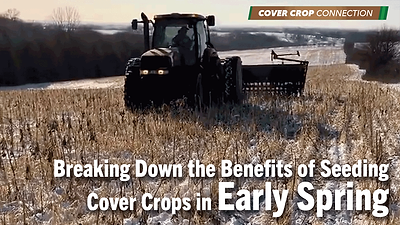No matter why you got into farming, profitability is still the end goal. Every farming practice undergone on your operation must be worth the return on investment. But what if we looked at cover crops in a different way — that covers themselves are the investment?
More and more growers are turning to covers as more than a conservation practice, but as a way to maximize every inch of their land all year long while improving soil health. The latest Census of Agriculture showed that national cover crop acreage increased nearly 50% from 2012-2017.
The USDA Sustainable Agriculture Research and Education program (SARE), along with the Conservation Technology Information Center (CTIC), has conducted cover crop surveys over the past 5 years and found covers improve corn and soybean yields over time as farmers gain experience managing covers and soil conditions improve. This survey data, as discussed in the report, provides the largest multi-year data set on cover crop yield response that has ever been assembled, including data from 500 farmers.
SARE published a report last week addressing the question of profitability in covers and seven common management situations that can affect how quickly covers result in a positive net return.
There are even situations where covers can improve profitability within just a year or two, such as:
- During drought
- When herbicide-resistant weeds are a challenge
- When covers are used for grazing livestock
- When a farmer is dealing with compacted soil
- Transitioning to no-till
- Covers are contributing to a commodity crop’s nutrient needs
- Receiving federal or state incentive payments for transitioning to covers
Growers can also expect to see yields improve: survey data showed that after just one year of using covers, growers saw a 0.5% increase in corn yields and a 2.1% increase in soybean yields.
Another interesting find from the survey was after the drought of 2012, covers resulted in a significant yield boost, to the tune of 6% in corn and 11.4% in soybeans, and only after one year of cover cropping.
As part of a well-organized plan, covers are certainly worth the economic investment. Over time, adding less inputs to the soil further maximizes economic returns, in addition to providing another crop to market or use as a feedstuff for livestock. When you think about it, can you afford not to plant covers?




